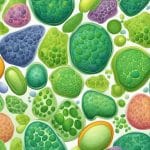Types Of Diffusion
Diffusion is a fundamental concept in the study of physical and biological systems. It is a process by which molecules move from an area of high concentration to an area of low concentration. The movement occurs spontaneously, without the need for external energy input. Diffusion can occur in various states of matter, including gases, liquids, and solids.
Fundamentals of Diffusion:
Diffusion is a natural process that occurs in many systems. It is driven by a concentration gradient, which is the difference in concentration of a substance between two regions. The greater the concentration gradient, the faster the diffusion rate. Diffusion can be influenced by various factors, including temperature, pressure, and the size and shape of the molecules involved.
Mechanisms of Diffusion:
There are two main types of diffusion: simple diffusion and facilitated diffusion. Simple diffusion occurs when molecules move through a membrane or other barrier without the need for a transport protein. Facilitated diffusion occurs when molecules move through a membrane with the help of a transport protein. This process is important in biological systems, where cells use transport proteins to move molecules in and out of the cell.
Factors Affecting Diffusion:
Diffusion rates can be affected by various factors, including temperature, pressure, and the size and shape of the molecules involved. Temperature affects diffusion rates by increasing the kinetic energy of the molecules, which leads to faster movement. Pressure can affect diffusion rates by compressing gases, which increases the concentration gradient. The size and shape of the molecules involved can also affect diffusion rates, with smaller molecules diffusing faster than larger ones.
Key Takeaways
- Diffusion is a natural process by which molecules move from an area of high concentration to an area of low concentration.
- Simple diffusion and facilitated diffusion are the two main types of diffusion.
- Diffusion rates can be affected by various factors, including temperature, pressure, and the size and shape of the molecules involved.
Fundamentals of Diffusion

Diffusion is a physical process that refers to the net movement of molecules from a region of high concentration to one of lower concentration. It is a fundamental process that occurs in various fields such as biology, physics, and chemistry.
Diffusion in Physics and Chemistry
In physics and chemistry, diffusion is the movement of particles or molecules from an area of high concentration to an area of lower concentration. This process occurs due to the kinetic energy of the particles, which causes them to move randomly. The concentration gradient is the driving force for the diffusion process. The concentration gradient is the difference in concentration of a substance between two areas, which drives diffusion or movement of particles from one area to another.
Biological Significance of Diffusion
In biology, diffusion plays a vital role in the transport of molecules across cell membranes. It is a passive process that does not require energy from the cell. The cell membrane is selectively permeable, and only certain molecules can pass through it. Small, nonpolar molecules such as oxygen and carbon dioxide can easily diffuse across the cell membrane.
Diffusion also plays a crucial role in the transport of nutrients and waste products in the body. For example, glucose molecules diffuse from the bloodstream into the cells, where they are used for energy production. Similarly, waste products such as carbon dioxide diffuse from the cells into the bloodstream, where they are transported to the lungs for elimination.
In conclusion, diffusion is a fundamental process that occurs in various fields such as biology, physics, and chemistry. It is a passive process that occurs due to the kinetic energy of particles and the concentration gradient. Understanding the fundamentals of diffusion is essential for understanding various biological and physical processes.
Mechanisms of Diffusion
Diffusion is the process of movement of molecules from a region of high concentration to an area of low concentration. There are three types of diffusion mechanisms: simple diffusion, facilitated diffusion, and osmosis.
Simple Diffusion
Simple diffusion is the movement of molecules across a membrane from an area of high concentration to an area of low concentration. This type of diffusion does not require any energy input and occurs spontaneously. The rate of diffusion depends on the concentration gradient, temperature, and the properties of the membrane.
Facilitated Diffusion
Facilitated diffusion is the movement of molecules across a membrane with the help of a protein channel or carrier protein. This type of diffusion occurs when the molecules are too large or charged to pass through the membrane by simple diffusion. The protein channels or carrier proteins provide a pathway for the molecules to cross the membrane. Facilitated diffusion does not require any energy input and occurs spontaneously.
Osmosis
Osmosis is the movement of water molecules across a selectively permeable membrane from an area of high water concentration to an area of low water concentration. This type of diffusion occurs when there is a difference in solute concentration on either side of the membrane. Water moves across the membrane to equalize the concentration of solutes on either side of the membrane.
In conclusion, diffusion is an essential process that occurs in all living organisms. The three mechanisms of diffusion: simple diffusion, facilitated diffusion, and osmosis, play a crucial role in maintaining the concentration of ions, solutes, and water across membranes. The understanding of these mechanisms is important in various fields of science, including biology, chemistry, and physics.
Factors Affecting Diffusion
The rate of diffusion is affected by several factors. These factors determine how fast or slow the particles move across a selectively permeable or semipermeable membrane. In this section, we will discuss the three main factors that affect diffusion: temperature, concentration gradient, and membrane permeability.
Temperature and Diffusion
Temperature plays a crucial role in the rate of diffusion. As the temperature increases, the particles gain more energy and move faster. This increased kinetic energy leads to a higher collision rate between the particles, which in turn, increases the rate of diffusion. On the other hand, lower temperatures lead to slower particle movement, resulting in a slower rate of diffusion.
Concentration Gradient Impact
The concentration gradient is the difference in concentration between two areas. The greater the concentration gradient, the faster the rate of diffusion. When there is a high concentration of particles in one area and a low concentration in another area, the particles will move from the area of high concentration to the area of low concentration until the concentration is equal throughout the space.
Membrane Permeability
The permeability of the membrane also affects the rate of diffusion. A selectively permeable or semipermeable membrane allows only certain molecules to pass through it. If the membrane is permeable to the particles, then they can easily pass through it, resulting in a faster rate of diffusion. However, if the membrane is not permeable to the particles, then the rate of diffusion will be slower.
In conclusion, temperature, concentration gradient, and membrane permeability are the main factors that affect the rate of diffusion. Understanding these factors is essential in predicting and controlling the rate of diffusion in various fields such as biology, physics, and chemistry.
Diffusion in Various States of Matter
Diffusion in Gases
Diffusion in gases occurs when the molecules of a gas move from an area of high concentration to an area of low concentration. The rate of diffusion in gases is directly proportional to the velocity of the particles and the energy of the particles. In a container, the diffusion of gas molecules will continue until the concentration of the gas is uniform throughout the container.
Diffusion in Liquids
Diffusion in liquids is similar to diffusion in gases, but it occurs at a slower rate due to the closer proximity of the particles. The rate of diffusion in liquids is also affected by the temperature of the liquid, with higher temperatures resulting in faster diffusion. In a container, the diffusion of liquid molecules will continue until the concentration of the liquid is uniform throughout the container.
Diffusion in Solids
Diffusion in solids occurs when particles move from a region of high concentration to a region of low concentration within a crystal lattice. The rate of diffusion in solids is affected by the temperature of the solid, with higher temperatures resulting in faster diffusion. Diffusion in solids is also affected by the presence of defects in the crystal lattice, which can provide pathways for the diffusion of particles.
Overall, diffusion is a fundamental process that occurs in all states of matter and is driven by the movement of particles from areas of high concentration to areas of low concentration. While the rate of diffusion varies depending on the state of matter and other factors, it is an important process that plays a critical role in a wide range of natural and industrial processes.
Applications and Examples of Diffusion
Diffusion in Biological Systems
Diffusion is a vital process in biological systems as it allows for the movement of molecules across membranes in every cell and throughout the body. For instance, in respiration, oxygen diffuses from the lungs to the blood, and then to the cells, while carbon dioxide diffuses from the cells to the blood, and then to the lungs. Additionally, diffusion plays a crucial role in the exchange of nutrients, waste products, and signaling molecules between cells.
Diffusion in Chemical Systems
Diffusion is also essential in chemical systems, where it is used to mix different substances. In dialysis, for example, diffusion is used to remove waste products from the blood by allowing them to diffuse across a semipermeable membrane into a dialysis solution. Similarly, in the chemical industry, diffusion is used to mix different chemicals to create new compounds.
Diffusion in Everyday Life
Diffusion is a universal physical phenomenon that occurs in everyday life. For instance, when a drop of food coloring is added to a glass of water, it diffuses throughout the water until the concentration is equal. In addition, when perfume is sprayed, the odor diffuses throughout the room, allowing it to be smelled by anyone in the vicinity. Diffusion also plays a role in the way that helium balloons slowly lose their lift over time.
In conclusion, diffusion is a fundamental process that occurs in various systems, including biological and chemical systems, as well as in everyday life. It plays a crucial role in the exchange of molecules between cells, the creation of new compounds, and the mixing of different substances.






